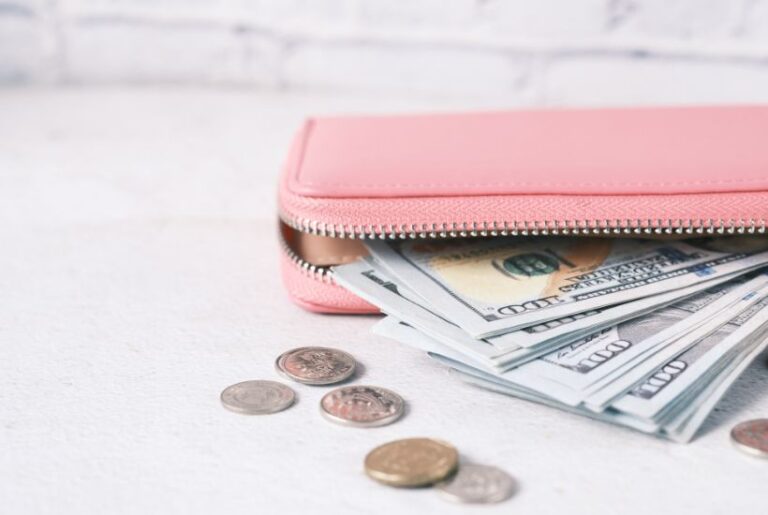The Ultimate Guide to Sinking Funds: How to Save Smarter and Stress Less
Managing money can feel like a never-ending battle, especially when unexpected expenses pop up or when you’re trying to save for something big. If you’re feeling overwhelmed by bills, debts, and the general rollercoaster of finances, you’re not alone. One tool that can really help you take control of your money is a sinking fund.
A sinking fund is like a secret weapon in your financial toolbox that allows you to plan ahead for upcoming expenses, so you’re not left scrambling for cash when something comes up. It’s a simple concept, but it can make a huge difference in how you manage your money. In this post, we’ll break down exactly what sinking funds are, why you should use them, and give you 25 example categories to start your own sinking funds.
What is a Sinking Fund?
A sinking fund is essentially a savings fund you create for planned future expenses. Unlike a traditional savings account, which is often used for emergencies, a sinking fund is designed for non-emergency, predictable expenses that you know are coming down the road. Think of it like a way to break down big expenses into smaller, more manageable chunks. By contributing a set amount each month to your sinking funds, you’re preparing yourself financially for these costs.
So, why call it a “sinking fund”? The term originally came from the idea of setting aside money to “sink” into a specific purpose or project. You’re setting aside money over time to cover these planned expenses, and you’re doing it bit by bit, rather than all at once.
Why Should You Use Sinking Funds
Using sinking funds has several benefits:
- Avoiding Financial Stress: When you have money saved for planned expenses, you won’t be hit with a large, unexpected bill that causes stress or puts you further into debt.
- Helping You Stay Organized: Sinking funds help you break down big financial goals into smaller, achievable amounts. This can make budgeting feel less overwhelming and more organized.
- Keeping You on Track: Saving for specific goals with sinking funds can prevent you from dipping into your emergency fund or other savings accounts. It keeps your money earmarked for specific purposes.
- Eliminating the Need for Debt: With sinking funds, you’re essentially paying for future expenses in advance, so when the time comes to pay for something big, you have the cash. This prevents you from using credit cards or loans, which can lead to more debt.
- Boosting Your Financial Confidence: Knowing you have money set aside for upcoming expenses gives you confidence and peace of mind, knowing you’re prepared for whatever life throws your way.
How to Set Up a Sinking Fund
Setting up a sinking fund is simple, but it requires a bit of planning and consistency. Here’s how to do it:
- Identify Your Categories: The first step is to decide what expenses you want to save for. These could be anything from holiday gifts to car repairs.
- Determine the Total Amount Needed: For each category, figure out how much money you’ll need. For example, if you know you’ll need $500 for car repairs in 6 months, that’s the total amount you’re saving for.
- Set a Timeframe: How soon do you need the money? If you have a year to save for a vacation, you’ll need to set aside less per month than if you need the funds in three months.
- Divide the Total Amount by the Months Left: To figure out how much you should save each month, divide the total amount you need by the number of months until the expense is due. For example, if you need $500 in six months, you’ll need to save about $83.33 each month.
- Track Your Progress: Keep an eye on how much you’ve saved for each fund. Regularly review your sinking funds to make sure you’re on track.
- Store the Funds Separately: You can keep your sinking funds in a separate savings account or in envelopes if you prefer a more hands-on method. The key is to keep the money separate from your everyday spending money.
Sinking Fund Categories to Consider
Now that you understand how sinking funds work, let’s take a look at some sinking fund categories you can create to help you save for upcoming expenses.
- Car Repairs and Maintenance
Cars need regular upkeep, from oil changes to tire replacements. Having a sinking fund for car expenses ensures you’re not blindsided by those high costs. - Medical Expenses
Whether it’s for doctor visits, prescriptions, or dental work, having a fund for medical costs can ease the burden when those bills roll in. - Emergency Fund
While not technically a “sinking fund,” it’s still important to set aside money for real emergencies (like job loss or a large medical expense). - Home Repairs and Maintenance
Homes require upkeep. Think roof repairs, appliance replacements, or unexpected plumbing issues. - Vacation Fund
If you’re dreaming of a vacation but don’t want to go into debt to pay for it, a vacation sinking fund is your ticket to stress-free travel. - Holiday Gifts
Holiday shopping can get expensive. Setting aside money for gifts ahead of time means you’re not scrambling to find extra cash in December. - Back-to-School Supplies
School supplies, clothes, and activities can add up quickly. A sinking fund helps you budget for the new school year. - Pet Expenses
From food to vet bills, pets can be expensive. Start a sinking fund to cover their needs, including vaccinations, grooming, and unexpected emergencies. - Childcare
Whether you have daycare, after-school care, or summer camps to pay for, childcare can be a significant expense to plan for. - Wedding or Special Event Fund
If you’re planning a wedding or a big family event, start saving early so you’re not overwhelmed when the time comes. - Insurance Deductibles
In the event you need to file an insurance claim, having a sinking fund for your deductible will make the process smoother. - Car Registration and Taxes
Avoid the surprise of car registration fees by putting money aside throughout the year. - Tech Upgrades
Need a new laptop, phone, or tablet? Set up a sinking fund so you can upgrade when necessary without stress. - Homeowners Association (HOA) Fees
Some communities have HOA fees that need to be paid annually or quarterly. Save for these fees in advance. - Christmas Decorations
If you like to decorate for Christmas or any other holidays, create a fund to cover those expenses. - Annual Subscriptions
Whether it’s streaming services, magazine subscriptions, or software, setting aside money monthly can help you cover these renewals. - New Furniture
If it’s time to replace old furniture, start saving so you can afford quality pieces without breaking the bank. - Health and Fitness
Whether it’s gym memberships or special workout gear, a sinking fund can help keep your health goals on track without impacting your budget. - Home Improvements
If you’re planning to remodel or make other major improvements to your home, having a sinking fund for this purpose can help. - Gifts for Birthdays and Anniversaries
Birthdays and anniversaries come every year, and they often sneak up on us! A sinking fund can keep you on top of gift-giving. - Subscriptions to Services (e.g., Boxes or Apps)
Monthly subscription services (like meal kit deliveries or subscription boxes) can add up. Save for them with a sinking fund. - Gardening
If you love gardening, start saving for new plants, tools, and landscaping projects throughout the year. - Emergency Car Fund
Aside from regular maintenance, it’s smart to set aside money for unexpected car repairs, like a flat tire or engine trouble. - Fun Money (Recreation Fund)
Don’t forget to budget for fun activities! Having a sinking fund for things like movie nights, concerts, or weekend trips helps keep your family’s recreation budget in check. - College Fund
Whether for yourself or your kids, starting a college fund early gives you more time to save and helps alleviate tuition stress later.
Sinking funds are a fantastic way to manage upcoming expenses without disrupting your financial peace. By setting aside small amounts each month, you’re able to handle big-ticket costs with ease. Whether it’s for home repairs, vacations, or medical expenses, sinking funds make it easier to budget and save for the things you need.
Start by creating a list of sinking fund categories that apply to your life, set realistic goals for each one, and begin contributing regularly. Over time, you’ll find that your sinking funds not only keep you organized, but they also help you stay debt-free and stress-free. So, take the plunge and start your sinking funds today—you’ll be glad you did!




